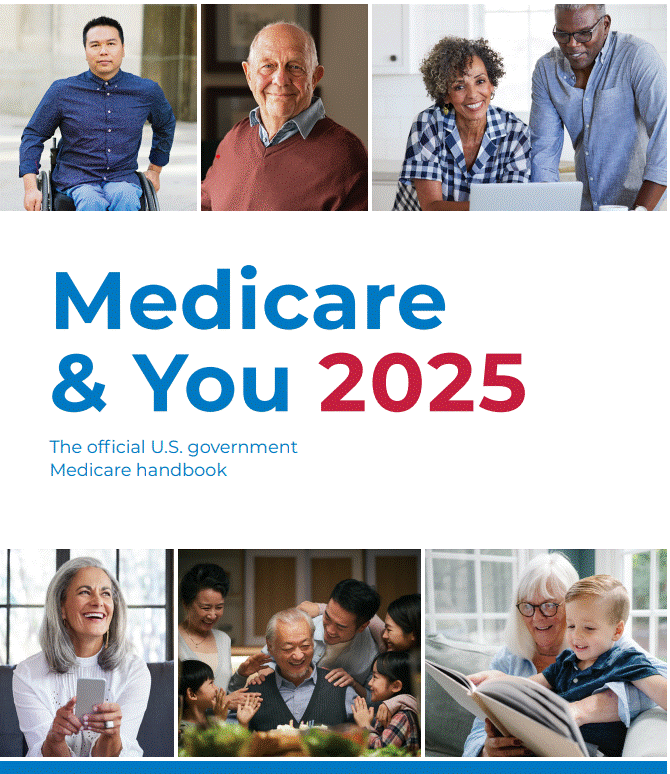
Big changes are coming to Medicare next year, as explained in the new digital version of the "Medicare & You" handbook. This official guide, produced by the Centers for Medicare & Medicaid Services, is a valuable reference for anyone starting or already enrolled in Medicare. The printed handbook will be sent to all Medicare households in late September. You can download a PDF copy here.
This publication has a rundown of Medicare benefits, health and drug plans, your rights and protections and answers to the most frequently asked questions about Medicare.
Here's a preview of how Medicare will change in 2025, included in the "Medicare & You" handbook.
Six changes coming to Medicare in 2025
Each year, Medicare calls out upcoming changes on page two of the guide's "What’s new & important?" section. This year, the section features five upcoming changes that will impact your Medicare coverage in 2025. I've included a sixth change that complements the new Part D cap on out-of-pocket expenses.
Here are the six new and important changes coming to Medicare in 2025:
1. Lower prescription drug costs
In 2025, your yearly out-of-pocket drug costs will be capped at $2,000. After you reach this cap, you don’t have to pay a copayment or coinsurance for Part D drugs for the rest of the calendar year.
2. New Medicare prescription payment plan
This new payment option works with your Part D drug coverage to help you manage your out-of-pocket drug costs, by spreading them across the calendar year. If you select this payment option, you’ll continue to pay your plan premium, and each month you’ll get a bill from your health or drug plan to pay for your prescription drugs instead of paying the pharmacy.
3. Changes to telehealth coverage
After December 31, 2024, you must be in an office or medical facility located in a rural area for most telehealth services. However, you can still get certain telehealth services, such as for mental and behavioral health, in your home no matter where you live. You can find a non-exhaustive list of services anyone can receive without being in a rural area on page 51 of your handbook.
4. Mental health and wellbeing
During your yearly “Wellness” visit, your health care provider can use a health risk assessment to better understand your social needs and refer you for appropriate services and support. This is called a “social determinants of health risk assessment,” and it is free as part of the Wellness visit. Medicare also covers expanded mental health care, such as intensive outpatient program services and services from marriage and family therapists and mental health counselors. You can find out more about which types of mental health services are covered and permissible locations to receive the services on page 46 of your handbook.
5. More resources for caregivers
Training. Medicare now covers training that helps your caregiver learn and develop skills to care for you, such as giving medications, as part of your treatment plan. Training must focus on your health goals, and your treatment must require a caregiver’s help to succeed. You pay 20% of the Medicare-approved amount and the Part B deductible applies.
Respite care. Medicare also covers inpatient respite care in a Medicare-approved facility. You can stay for up to 5 days each time you get respite care.
New pilot program for people living with dementia. People living with dementia and their family and unpaid caregivers may be able to get additional support through the Guiding an Improved Dementia Experience Model pilot program. The model began on July 1, 2024, and will run for eight years.
6. Postal Service Health Benefits Program (PSHB)
Starting January 1, 2025, eligible U.S. Postal Service employees, retirees, and their families will get coverage through the Postal Service Health Benefits Program (PSHB) instead of FEHB. If you are an annuitant as of January 1, 2025, and not currently participating in Medicare Part B, you are not required to enroll in Medicare Part B to continue your health insurance coverage in the new PSHB Program. Participation in Medicare Part B is voluntary. If you are an annuitant as of January 1, 2025, and are already enrolled in Medicare Part B, you are required to remain enrolled in Medicare Part B to continue coverage under PSHB.

How much will Medicare cost in 2025?
The handbook does not answer how much Medicare will cost in 2025. The Medicare Part A deductible and Part B and Part D premiums for 2025 will be released closer to the beginning of Medicare Open Enrollment, held annually from October 15 to December 7. The premiums and deductibles are normally released after the Social Security Administration announces the official COLA, which is scheduled for 8:30 am ET on Thursday, October 10.
The Medicare handbook has many formats
There are multiple formats of the "Medicare & You" handbook available for download. Whether English is your second language or if you suffer from impaired vision — you should be able to find one to suit your needs.
A large print edition can be found here, you can access an audio version here and you can download copies in e-book or Mobi formats here. A braille edition can be requested by calling 1-800-MEDICARE (1-800-633-4227) and you can also make the request online through your Medicare.gov account.
Currently, you can download an edition in Chinese, Korean, Spanish and Vietnamese.







